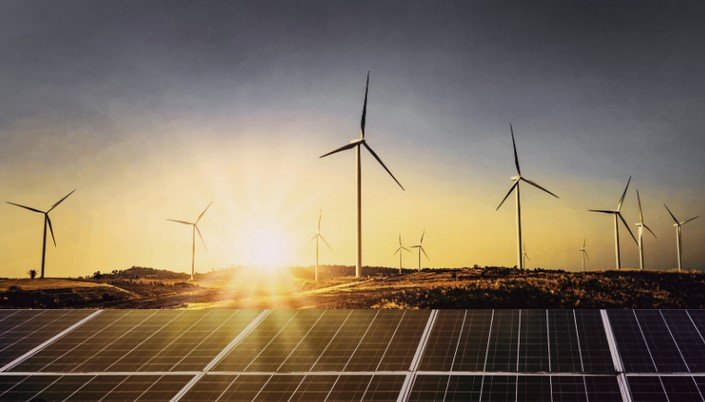Technology plays a crucial role in promoting environmental sustainability. As the world faces challenges like climate change, resource depletion, and pollution, innovative technologies are providing solutions that help preserve our planet. From renewable energy to waste management and sustainable agriculture, technology is shaping the future of environmental sustainability. In this post, we will explore how technology contributes to protecting the environment and driving positive change.

1. Advancing Renewable Energy
Technology has revolutionized the renewable energy sector, making clean energy sources like solar, wind, and hydroelectric power more efficient and accessible. Advances in solar panel technology, for example, have significantly reduced costs, making solar energy a viable option for homes and businesses alike. Similarly, wind turbines have become more efficient, harnessing greater amounts of energy at lower costs.
The rise of energy storage solutions, such as advanced batteries, has also played a critical role in renewable energy. These technologies allow energy generated from renewable sources to be stored and used when needed, addressing one of the key challenges of renewable energy: its intermittency. With continued advancements in renewable energy technology, the world is moving closer to a sustainable energy future, reducing dependence on fossil fuels and lowering carbon emissions.
2. Enhancing Energy Efficiency
Energy efficiency technologies have made it possible to reduce the amount of energy required to perform tasks, helping businesses and households lower their environmental impact. Smart grids and energy-efficient appliances, such as LED lighting, smart thermostats, and energy-efficient HVAC systems, are transforming how we use energy.
For instance, smart home technology allows users to monitor and control their energy consumption in real time, reducing waste and lowering electricity bills. Similarly, energy-efficient industrial systems and processes help businesses minimize energy use while maintaining productivity. By reducing energy consumption, these technologies help lower greenhouse gas emissions, contributing to a cleaner, more sustainable world.
3. Supporting Sustainable Agriculture
Technology is also revolutionizing agriculture, making farming more sustainable and less harmful to the environment. Precision farming uses data and technology to optimize the use of resources such as water, fertilizers, and pesticides. Drones, sensors, and GPS technology help farmers monitor crop health, soil quality, and water usage, allowing them to make more informed decisions.
In addition, vertical farming and hydroponics are innovative agricultural practices that reduce the need for large amounts of land and water. These technologies allow for food production in urban environments, reducing transportation emissions and the carbon footprint of food production. By improving resource efficiency and reducing waste, technology is making agriculture more sustainable.
4. Promoting Waste Reduction and Recycling
Technology is helping reduce waste and promote recycling through innovative solutions that make it easier to manage waste. Smart waste management systems use sensors and AI to optimize the collection and sorting of waste, making recycling more efficient. For example, AI-powered robots can sort recyclable materials more accurately, reducing contamination and improving recycling rates.
Additionally, innovations like biodegradable plastics, waste-to-energy technologies, and recycling platforms that track materials can reduce the amount of waste sent to landfills. These technologies promote a circular economy, where products and materials are reused, repaired, and recycled, minimizing waste and conserving resources.
5. Fighting Climate Change with Data and AI
Data-driven technologies, including artificial intelligence (AI) and machine learning, are playing an increasingly important role in environmental sustainability. AI can analyze large sets of environmental data to predict climate patterns, monitor deforestation, and assess pollution levels. This allows governments, businesses, and environmental organizations to make informed decisions and take proactive steps to combat climate change.
Moreover, AI models can optimize energy consumption in industries, transportation, and logistics, reducing emissions. By harnessing the power of data, technology is helping scientists and policymakers better understand the environment and find effective solutions to environmental challenges.
Conclusion
Technology is essential in advancing environmental sustainability. Also, from renewable energy innovations and energy efficiency improvements to sustainable farming practices and waste reduction technologies, technology is driving progress toward a more sustainable future. By continuing to invest in and adopt green technologies, we can reduce our environmental impact and protect the planet for future generations.




